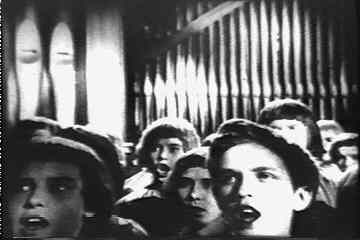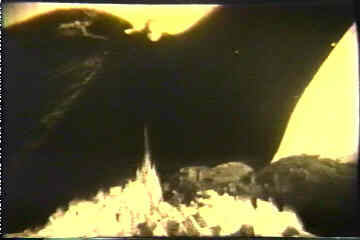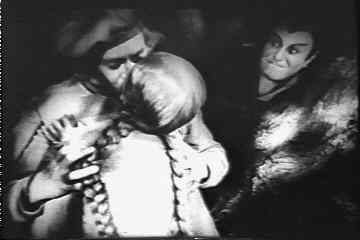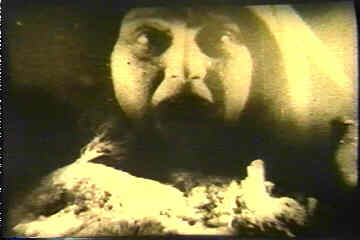


Murnau is a master of subtlety - in his films the smallest gesture can communicate many ideas. Faust may be his least subtle film - one that builds its power through large quick strokes but nonetheless maintains the kind of intimacy with its characters that his other later films do.
Faust is part Goethe and part Marlowe, shot through with Murnau. It features an international cast, with a Swedish Faust and a German Mephisto, Emil Jannings.
The film begins with the forces of the prince of darkness riding across the sky. The prince of peace, a flaming-haired angel with enormous wings, wagers the world with the prince of darkness, Mephisto. The locus of the wager is Faust, an alchemist, a scholar. Mephisto covers Faust's city with a dark cloud of plague, and in his frustration over his inability to heal his fellow citizens, Faust hurls his books into the fire and calls upon the assistance of the prince of darkness. Jannings' portrayal of Mephisto, particularly his giant form looming over Faust's city, was the inspiration for the "Night on Bald Mountain" sequence in Walt Disney's Fantasia

Through Mephisto, Faust recaptures his youth and an assistant, the trickster of tricksters himself. Both Faust and Mephisto are young men as Faust wishes for a home and is transported to the village in which Margarethe lives with her mother and brother, on leave from the army. Faust falls in love with her, but with trick upon trick Mephisto turns a sun-drenched love story into tragedy that encompasses a merciless winter storm and a burning at the stake.
At the center of the film is the parallel wooing of Margarethe by Faust and Mephisto by Margarethe's Aunt Marthe. Mephisto and Marthe provide broad comedy to contrast with the earnestness of Faust's pursuit of Margarethe. Later, Martha is just as merciless as Mephisto, rejecting Margarethe when the rest of her village does.
This center of the film is perfectly framed by much darker sequences involving Faust and Margarethe alone. The first third of the film follows the trials and fall of Faust, while the last third shows what happens to Margarethe after the tragedy that strikes her as a consequence of her love for Faust.
This sequence of Margarethe is to me the most powerful part of the film. She wanders alone through a biting winter storm, clutching her dying baby, all she has left of her relationship with Faust. Camilla Horn gives the performance of her career here (two years later she would co-star with John Barrymore in Tempest before returning to Germany) in a role originally intended for Lillian Gish. Horn's ability to transform her entire body from exhilaration to a kind of stalking misery in which she looks like a moving mannequin is akin to Gish's performance in Broken Blossoms, or Jannings' in The Last Laugh.

Murnau paints the story with one of his largest palettes. The film's swirling clouds of special effects evil frame the painterly intimacy in its middle. Faust was Murnau's last German film, and provides a strong bridge to take him from the stylization of expressionism that informed his early films to the stylized realism of his work in America.
 Directed by
F.W. Murnau
Directed by
F.W. MurnauBack to Sloppy Films
Copyright © 1997 John Akre
http://www.sloppyfilms.com/murnau/faust.htm